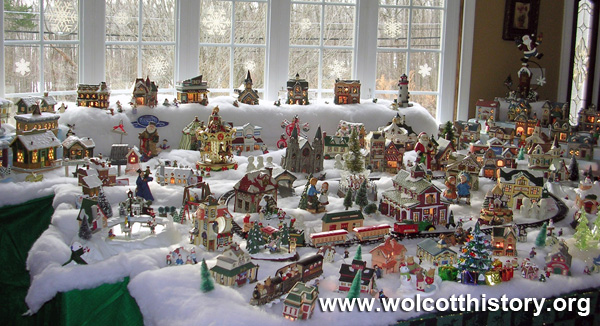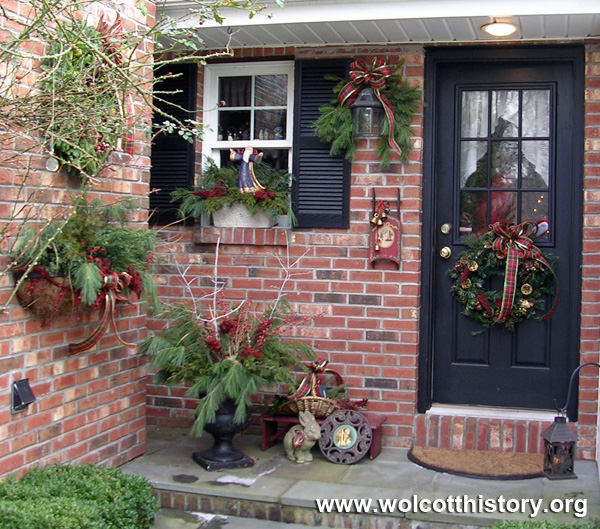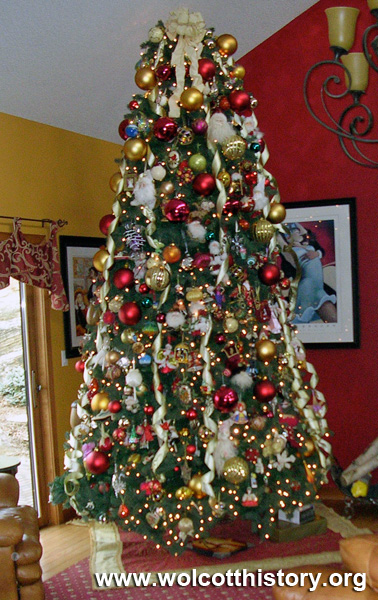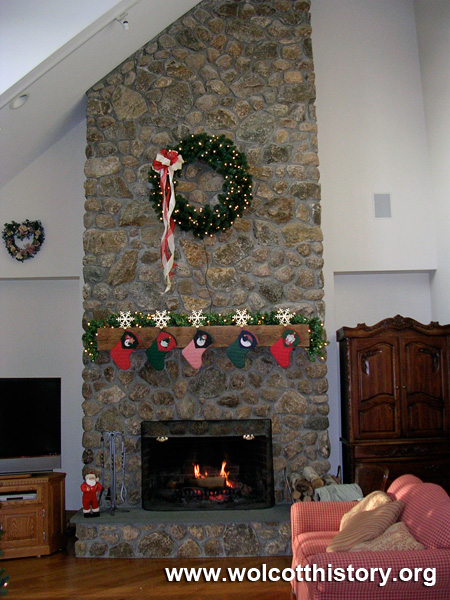|
|
||||||||||||
 |
 |
|
Wolcott Historical Society News - January 2011 By Florence Goodman The Wolcott Historical Society holds a Holiday House Tour every other year to raise funds to maintain the Stone Schoolhouse Museum. This year the Tour was held on Saturday, December 11th. Although the four homes that were showcased were not historical homes, they will go down in history for their beautiful holiday decorations. The homeowners graciously opened their homes for this festive occasion to about sixty-five visitors. Guests were welcomed at each house to find unique architecture and or decorations inside and out.
The Society would like to thank Leslie and Raymond Lamitola, Sharon and Robert Zabbara, Eileen and Dennis Cleary, and Erin Dillon for opening their homes for this fundraiser. Each homeowner displayed a festive centerpiece that was donated by Orchid Florist in Waterbury, O’Rourke and Birch in Waterbury, and Hubbard Florist in Bristol.
The next Tour won’t be held until December 2012, but we are already thinking about it. We hope to hold it around the Town Green and ask homeowners located in the Historic District to show off their beautiful old homes. We also hope to include the Congregational and Episcopal Churches, the Grange Hall and Town Hall that all have historical significance and beauty, which leads me into this month’s article. Several years ago, I wrote about our Town Green, but recently I was asked to write about it again so I will repeat it in this edition.
Wolcott is fortunate to have a quaint picturesque landscape of the green to offer its residents. Most of these structures have been there for well over a hundred years. A quote from a former resident, Mrs. Mary R. Carter, who was born in 1840 had this to say about our town center, “There were two churches, a schoolhouse, two stores, and a blacksmith shop forming the nucleus of the town center.
"On the west of the Congregational Church, there was a pound, so called, where roaming cattle causing damage to property were confined until redeemed for the price of one dollar for each animal. Across the street to the south stood a little red schoolhouse. The next house was the resident of the storekeeper — then came the post office and general store. Next came Selden Baily’s house and blacksmith shop.
"Then there was the large old-fashioned house of Jonathan Bement. Adjoining was William Welton’s drug store, then a little red house occupied by a spinster lady with an obsession of picking up small pieces of glass in the roadway, fearful for the bare feet of the school children. Then came the Episcopal Church. Mr. Benhan, partner in the Benham and Tuttle Store, occupied the next house. Just north was Mr. Tuttle’s home. On the east was the dwelling of Clark Bronson, the mail carrier, who went to Waterbury every Saturday for the mail.” It is evident that memories of the green span centuries.
Prior to the building of the first meetinghouse, the original northern portions of the green, including the present site of the Congregational Church and parsonage were reserved for use as a commons by the town’s early settlers. On June 8, 1772, Joseph Atkins granted two acres of land for the site of the Congregational Church and a green for the church. In 1801, Charles Upson gave the eastern portion of the green to the town. Michael Harrison (in 1800) and Asaph Hotchkiss (in 1808) gave the remaining portions of the green to the town.
Today the green features several lampposts, large maple trees, and an evergreen tree that is decorated to welcome in the holiday season. In 1916, a granite monument depicting a Civil War soldier was erected in the center of the green. This monument was dedicated to the veterans of the Revolutionary War, the War of 1812, and the Civil War, and was presented to the town by Leverette D. Kenea of Wolcott.
I hope to continue with my farm articles next month and finish up with farms in the northern section of town. I am still looking for information on old Wolcott farms, so if you can share a story with me, please email me at out website.
(Much of the information for this article was taken from The 1986 Historic Resources Inventory by J.P. Loether, The Meeting House Atop of Benson’s Hill by John Washburne, and Orcutt’s History of the Town of Wolcott From 1731 to 1874.)
Our Schoolhouse Museum is open by appointment only; you may visit the Museum by calling Loretta Leonard at 203-879-4310 or Flo Goodman at 203-879-9818. Our meetings are held on the first Thursday of each month at the Old Stone School on Nichols Road at 6:30 P.M. unless snow cancels them in the winter season.
A festive village scene found in Sharon and Robert Zabbara’s home.
Outside decorations at Leslie and Ray Lamitola’s home.
Christmas tree in the home of Erin Dillon.
Fireplace in the home of Eileen and Denis Cleary.
1912 picture of Town Green with Grange Hall and Town Hall on the left. The Congregational Church with covered area for buggies or horses is on the right.
To view past installments of the Wolcott Historical Society News, click here.
|
|
|
[Home]
[News]
[Purpose]
[Calendar]
[Museum]
[Membership]
[History]
[Contacts]
[Links]
All material at Wolcott Historical Society Web sites Copyright © 2000-2011 Wolcott Historical Society |




